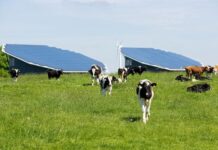by Peggy Brekveld, President, OFA
As an organization representing farmers, Ontario Federation of Agriculture (OFA) needs to know both the realities of the current situation as well as look forward to the kind of future we want for our sector and for Ontarians.
Knowledge is critical when you’re taking positions on issues for the farming sector and our rural communities and that’s why we support and invest in research.
Unlike many other agricultural organizations, the research OFA funds is less about determining the best crop to grow or looking at better ways to feed livestock, and more about processes and issues that play a key role in developing the policy positions we will take to government on behalf of our members.
Much of this research happens behind the scenes so, two years ago, we started hosting Research Day – an event where OFA’s Farm Policy Research Group shares outcomes on the various research initiatives OFA is involved in and presents updates on other key issues the team is working on.
Our 2023 event took place at the end of March and engaged close to 200 people including farmers, researchers, consultants, agricultural organizations, government and municipal representatives, and media. Here are some highlights of the day:
Deadstock: An issue the livestock sector grapples with is finding solutions to what the industry calls deadstock – properly handling and disposing of animals that die unexpectedly on the farm. Jennifer MacTavish presented an update on a project she is leading for Livestock Research Innovation Corporation (LRIC) that is taking a new look at the issue from an international and innovation perspective, in hopes of uncovering practical new solutions the Ontario industry might be able to adopt. A final report is to be released soon.
Agri-tourism: Last year, OFA partnered with the Ontario Chamber of Commerce (OCC) and the Tourism Industry Association of Ontario (TIAO) on the 2022 State of the Ontario Tourism Industry Report. We also conducted a local food and agritourism survey, and overall, we learned that the Ontario farms engaged in direct-to-consumer sales range in size and scope and offer a diverse range of product, and that agritourism is an industry ripe for growth and economic opportunity.
Cyber security: As farm businesses adopt more smart technology and connected systems, they also increase their exposure to cyber security risks. Abbas Yzadinejad of the University of Guelph’s Cyber Science lab explained three common threats:
data breaches – a system is hacked and information is stolen
phishing – fake messages that look like they are from a trusted entity (like a bank) to trick a user into giving out credit card information or login credentials
ransomware – attacks where a system is frozen and held for ransom
Best practices for farmers to protect themselves include keeping software up to date, using strong passwords that are changed regularly, backing up data, and educating your staff on where threats come from.
Environmental practices: Dr. Michael Drescher from University of Waterloo has been studying environmental best management practices – windbreaks, on-farm forests and buffer strips – and what motivates farmers or hinders farmers from adopting these practices.
He found that over 70% of farmers maintain forests or wooded areas on their farms, 64% have planted windbreaks and just under half maintain riparian buffer strips. Leading motivators for these decisions were their own convictions, social pressures, and government.
Agriculture in northern Ontario: OFA has been a strong advocate for supporting agriculture in northern Ontario and OFA senior farm policy analyst Ben Lefort gave an overview of agriculture’s economic footprint in the north and how that has changed in the last decade.
The number of farms has increased, and the revenue per acre of farmland has almost doubled, with much of the growth coming from field crop production. Funding for tile drainage and land clearing has played a key role in supporting this growth, but northern Ontario also needs infrastructure investments like roads and highspeed internet, as well as more access to farming support services like veterinarians.
Speakers also provided updates on OFA’s slow moving vehicle road safety campaign, mental health research, fertilizer use, and soil health benchmarking in the Greenbelt.
For anyone interested in more information, recordings of all the sessions will be available on our YouTube Webinar channel and shared across our communication platforms in the coming weeks.


